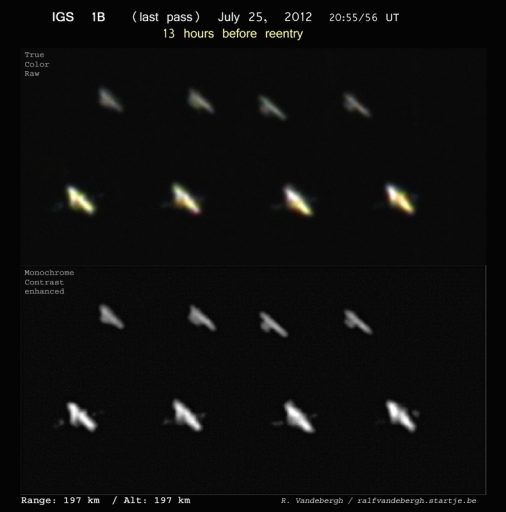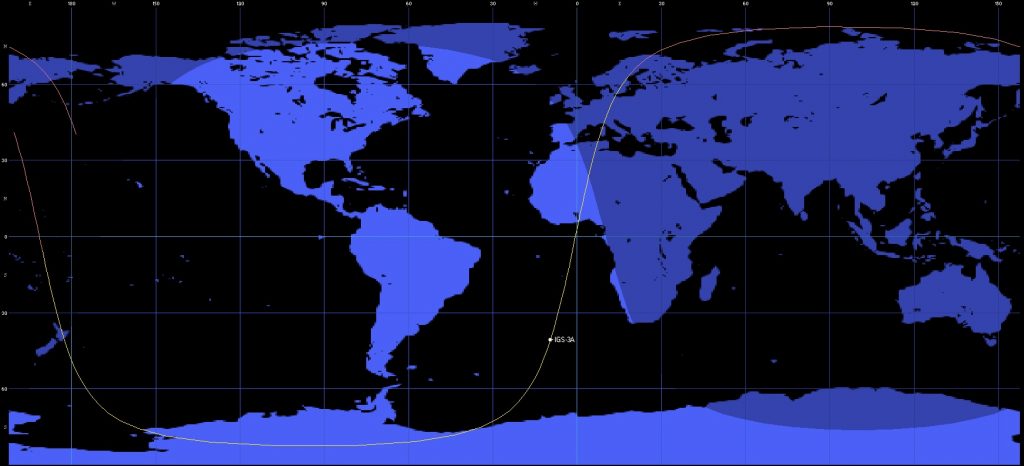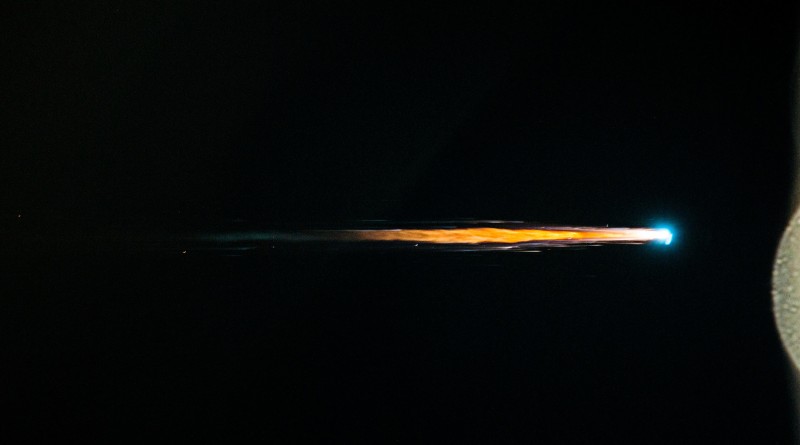Re-Entry: IGS 3A

The Japanese IGS 3A Optical Reconnaissance Satellite re-entered the atmosphere on October 29, 2016 after a decade in orbit collecting intelligence in the form of images at a one-meter ground resolution.
NORAD ID: 29393
Type: Optical Reconnaissance Satellite
Object: IGS 3A (IGS Optical 2)
Origin: Japan
Inclination: 97.5°
Launch: September 11, 2006 – 04:35 UTC
Launch Vehicle: H-IIA
Launch Site: Tanegashima Space Center, Japan
Re-Entry Prediction: October 29, 2016 – 17:07 UTC +/- 43 Minutes
Re-Entry Zone: Unknown
The IGS 3A spacecraft was part of Japan’s fleet of Information Gathering Satellites, launched atop an H-IIA rocket on September 11, 2006 as the second optical reconnaissance operated by the Japanese. It remained in operation until mid-year 2013 when it lost its ability to control its orbit, beginning a slow drop from an operational atltitude at 478 Kilometers.
Japan’s Information Gathering Satellite fleet (IGS) is a constellation of remote sensing spacecraft in orbit. IGS satellites either carry an optical reconnaissance payload or a Synthetic Aperture Radar for remote sensing. The main purpose of the satellite program is to provide an early warning capability of missile launches, initiated in 1998 in response to a North Korean missile test over Japan.
The first pair of IGS satellites was launched on March 28, 2003 atop an H-IIA 2024 rocket blasting off from the Tanegashima Space Center. The IGS 1 and IGS 2 satellites were first generation spacecraft achieving a ground resolution for optical images of 5 meters (color) and about 1 meter (monochromatic). SAR resolution is believed to be better than 3 meters.
IGS 3A was launched in 2006 and represented the second generation of optical satellites that achieve a resolution of one meter.
Because the IGS Satellites are military intelligence spacecraft, details on their design and operation are not provided. It is known that the spacecraft have a mass of about 1,000 to 1,200 Kilograms and that power generation is accomplished by solar arrays. Orbital data of IGS spacecraft is not provided regularly, but satellite trackers around the world have been keeping tabs on the constellation.
Re-Entry Orbit


